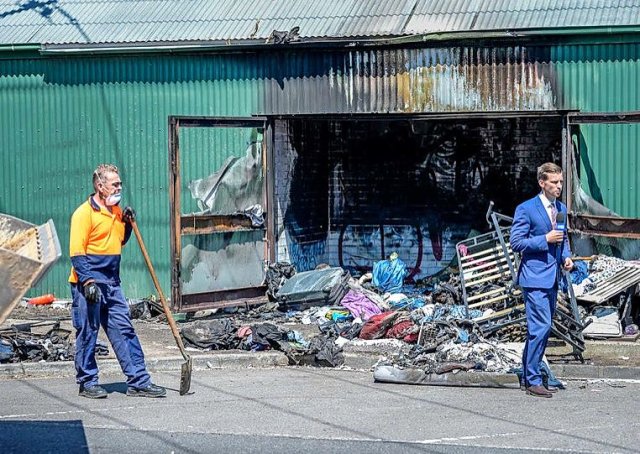
There have been destructive attacks on the homeless in the past year in Melbourne, but the vitriolic hate campaign and physical attacks on the street, and on squatters, has reached a deadly level: murder.
Just before midnight on March 1, a cowardly arson attack set off a blazing fire at Kinnear’s rope factory in Footscray, which took 40 minutes for the fire brigade to control. Three squatters were tragically killed: Tanya Burmeister and her 15- year-old daughter Zoe were among the dead.
The devastating scene was witnessed by taxi driver Mohamed Ali, who told the ABC: “When I passed the street I saw the fire over there. When I was turning I heard some screaming, but I was not sure who was screaming.”
Just 24 hours before the explosions ripped through the factory, the council approved a planning permit for a $63-million development of 200 commercial apartments on the 3.3 hectare site.
By morning the arson squad identified a large petrol can, as the murder weapon. Someone, somewhere in the deep underbelly of Melbourne, was responsible for the homicide of three homeless people. As locals placed flowers on the site and a vigil was held, a man was arrested in Melbourne's CBD and charged with homicide and arson.
Despite being well-known as peaceful residents to those in the area, the three people had received official warnings from developers and the council. There were campaigns from NGOs to move them into official shelters. During the fire, neighbours ran out with buckets of water, but the fire was too large. Locals described the squatters as calm and peaceful and “trying to make a go of it”. One local said of the male squatter: “He was a really gentle, calm, relaxed person. He didn’t bother anyone, he was just a lovely guy.” The squatters were known in the area for planting an organic garden and selling recycled bicycles.
The Homeless Persons Union Victoria (HPUV) said: “Heartfelt thoughts and condolences to the friends, family, and community who have experienced a horrible tragedy.
“This is the result of a society that cares more for private property and profit than it does for the community and the fundamental human right to shelter, spaces where people, regardless of their income or status, are able to develop relationships.”
In the past year, there has been a spate of arson attacks in and around Melbourne, targeting commercial buildings, nightclubs, and restaurants. St Kilda’s Stoke House was firebombed. Rumours have swirled about coming attacks on the rooming houses in Melbourne’s south.
Across the city, the homeless have faced physical and verbal attacks as the overheated housing market has placed families and the vulnerable on the street. House prices have risen a phenomenal 13% this year, far beyond the deteriorating stock market — and seemingly the disadvantaged and the homeless are in the way of the new landlord capitalism.
As the HPUV pointed out, rising housing prices and the vitriol and hate spewed in the media against the homeless are creating a perfect storm, where the homeless and squatters are confronted by developers, councils and citizens.
With homeless camps and squatting on the rise, the attack has the Melbourne and Footscray homeless people on edge. Near Footscray City College a homeless camp has been set up. The camp is facing attacks and opposition. HPUV said: “Police don’t count attacks as statistics, so we don’t know how many people are being attacked in Melbourne. The homeless are expendable.”
Opposition to camps and squatters in central Melbourne and Footscray has been going on for 10 years. Footscray itself, once “the affordable suburb”, became snared in the hipster and developer gentrification process.
In 2006, this reporter spent time with Footscray squatters in a communal art-factory. Even with the factory owner’s consent to squat, the squatters faced daily threats and subsequently the factory was developed into elite apartments, and afterward a laneway festival was established near the site.
The rope factory development is the latest elite development and part of the first stage of the Kinnear's Precinct Development Plan at 124–188 Ballarat Road. In line with the approved council development plan, the development bypassed the Victorian Civil and Administrative Tribunal and, seemingly, democracy.
Not that this matters anymore; there’s not much left of the old factory. After the fire, the debate about the site is all but over, and the council will probably let the development go ahead — as evidenced by the bulldozed site.
The deaths of three innocent people will reverberate for a long time to come. But there will perhaps be legal questions over the proceeds of crime, and the courts may well decide the future of the site. A public housing site, dedicated to the victims, might be just the right approach to start the healing and reconciliation process with Melbourne’s homeless.
Like the article? Subscribe to Green Left now! You can also like us on Facebook and follow us on Twitter.